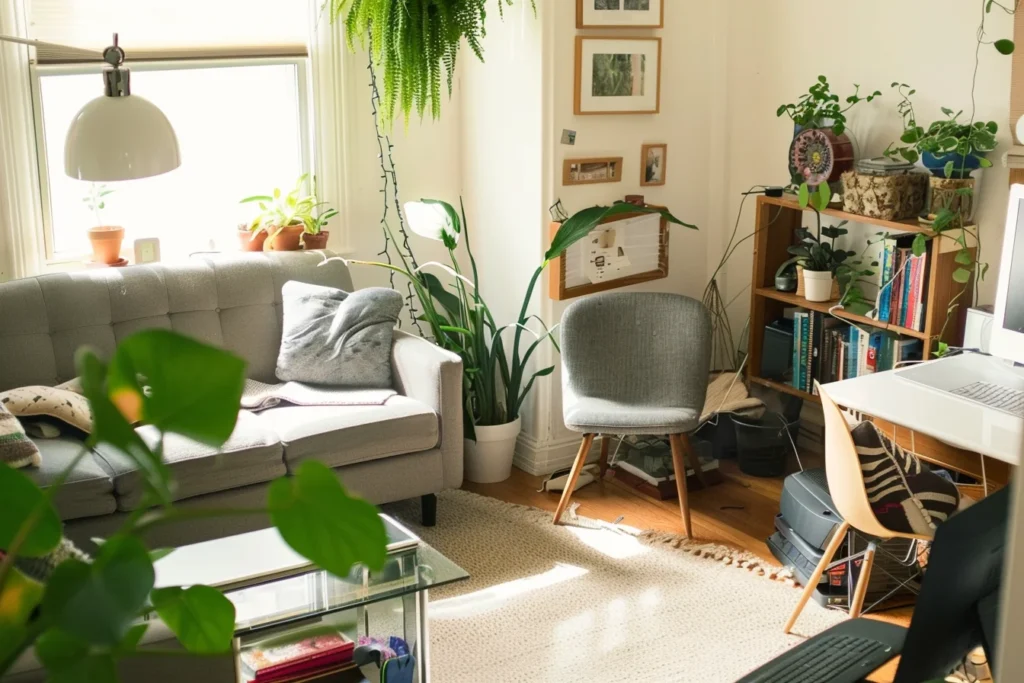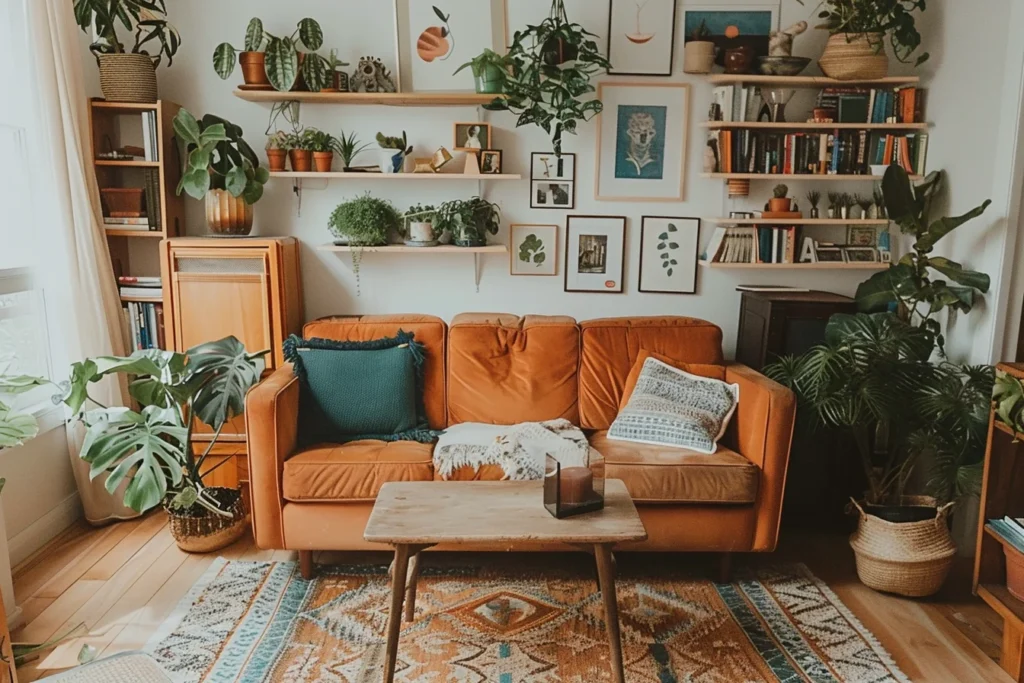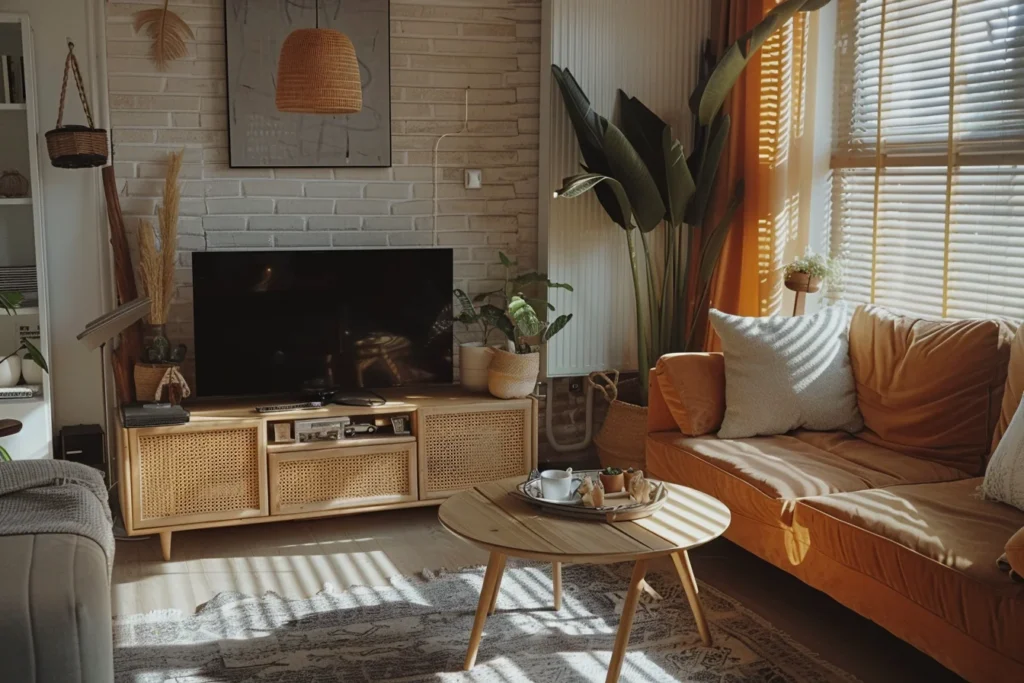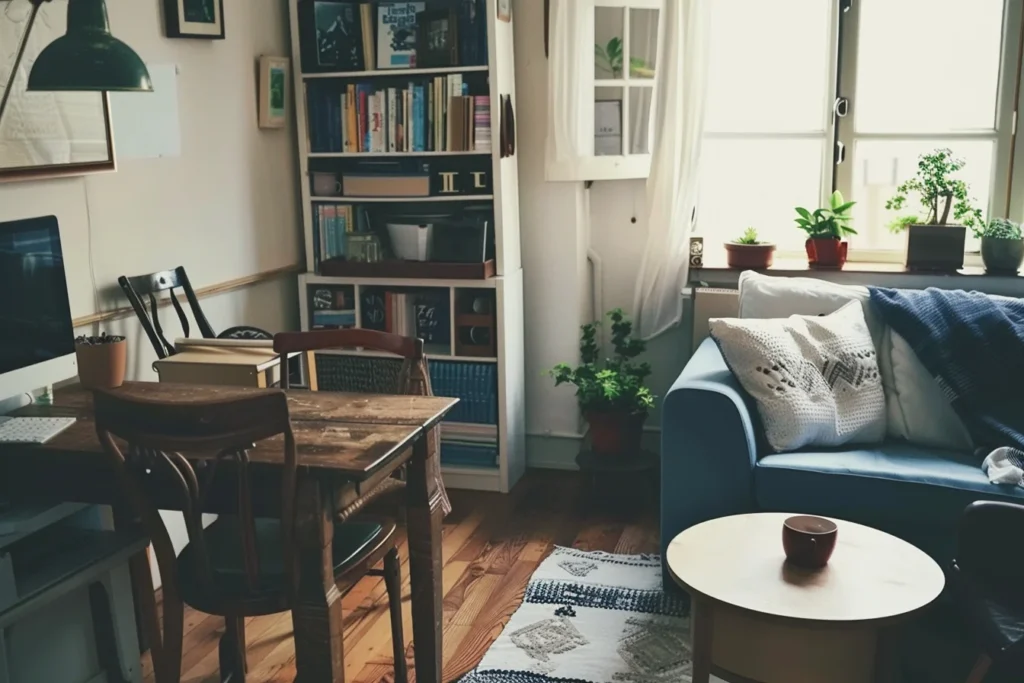Decorating a tiny living space like my cozy 700-square-foot apartment certainly comes with its own set of obstacles. From figuring out how to arrange furniture to ensure there is enough storage without crowding every corner, achieving that balance between style and functionality can be quite challenging.
With different design failures that I have experienced over time, I am now able to identify some common decorating mistakes in small spaces.
Common Small Space Decorating Mistakes
Many people face similar issues when furnishing small homes, condos or apartments as Heather Goerzen, lead designer at Havenly suggests.

1. Small Furniture Isn’t Always the Answer
The most enlightening tip was the counterintuitive idea that smaller furniture pieces aren’t always good for small rooms. I initially believed that filling my small living room with two loveseats instead of one large sectional couch or several small pieces of art instead of one statement piece would make it appear larger.
But according to Heather bigger items are more effective at maximizing smaller spaces.
Bigger but fewer furniture and decor items allowed me to create focal points in the room and made it flow purposefully. This helped ground it by reducing clutter and making it feel more intentional. What I learned was, that while it might seem wise to fill up a room with many little things.
Actually this results in a tightly packed area that is visually disorganized. Instead, having a few larger pieces simplifies space and gives it an air of calm collectedness.
2. The Importance of Editing
Another important lesson was learning about editing my belongings. In a small apartment, I wanted everything from all those favorite pieces of furniture and décor accumulated over time. However, Heather reasoned that there should be an appraisal of what truly fits into such space.
Letting go of conventional ideas such as maintaining separate dining rooms or office spaces enabled me to see the advantages of creating multifunctional areas instead – i.e., using the same dining table during the day as a workspace. I found that not only did it allow me to create an open-plan space, but it also made my dining area more spacious.

One freeing aspect I did was getting rid of things in my home that no longer fit the space and replacing them with better-suited functional pieces. By reducing the number of items in my space, I’ve found that not only does the area feel bigger, but each chosen piece now has a chance to truly shine.
3. Utilizing Vertical Space
One transformative idea was making the most of vertical space. Initially, my small apartment felt cramped, but by incorporating floor-to-ceiling bookshelves and hanging statement lighting, I not only added much-needed storage but also drew the eye upward, creating the illusion of more space.
This vertical emphasis changed the feel of my rooms, making them appear taller and more open. I also added some large-scale artwork, which became a focal point and added personality without using up valuable floor space.
4. Balancing Open and Closed Storage

Though I love open shelves and glass-front cabinets, it became apparent that not everything in my house can be displayed beautifully.
Heather advised me to focus on closed storage to hide things like cables, cleaning supplies, and winter clothing that are less pleasing to the eye. A coffee table and TV stand with hidden storage were some of the multi-functional furniture pieces I bought at this stage.
That way, I could still have open shelving displaying carefully chosen items while keeping away practical but ugly ones. In order to maintain an organized, stylish space, however, this balance between open and closed storage was necessary.
5. Furniture That Doubles as Storage
In conclusion, when furnishing my small apartment, I saw how important it is for furniture to serve more than one purpose. Each item had to have a dual role due to the limited space available.
For example, instead of buying a single-purpose ottoman for my apartment, I bought a storage ottoman that could also be used as extra seating for guests or as a bed for overnight visitors and even has drawers underneath the bed frame.
This approach saved me some room besides improving the living area’s efficiency by maximizing functionality.
6. Using Window Treatments in Small Spaces
Initially, curtains didn’t seem very important in my tiny apartment because they would only crowd up the space. Hence we didn’t need them according to Heather’s opinion about bare windows in her rooms transforming into severe-looking spaces lacking a complete feeling.
Taking her recommendations into account helped me realize that adding curtains created texture and comfort between various parts of the room thus making it look warmer and united.
To increase daylighting without sacrificing privacy meant hanging long wide drapes around the top part section of windows as suggested by Heather.
The method allows your curtains to drape near your window without covering its topmost region thereby blocking out sunlight during the daytime they only touch your window frames softly on their sides so that you do not feel enclosed yet there is provision for different levels in your room.
7. Designing for Lifestyle, Not Just Style

The value of a function over form was perhaps the greatest lesson I learned. Heather advised me to start by assessing what the space would be used for. At first, I thought my small living area wouldn’t allow me to entertain because I like hosting parties.
However, it is possible to create a flexible area that can accommodate daily uses as well as social events by using multi-purpose furniture including a table that also functions as an office desk.
On the other hand, another approach could involve creating comfortable seating areas and minimizing dining spaces for individuals who prefer privacy most. This ensures that every inch of your home serves a purpose and reflects your personal habits and preferences.
At its core, decorating a small space is not just about making it look good but about ensuring it functions efficiently and comfortably within one’s lifestyle.
Whether you are selecting window treatments that match both style and light or adjusting your arrangement for daily activities, each decision should lead to functionality in addition to warmness.
Heather made me see possibilities within my small square footage proving that even smaller spaces can be transformed into dream homes and lifestyles.
Personal Lessons and Tips
In my experience, planning is very important. Now, before I buy a new item, I measure the space and think about where each piece will go and how it will fit into the entire design.
I would rather choose items like an ottoman with storage or a sofa bed instead of a traditional one which will really save me in my small apartment.
Although decorating a small space can be challenging, it is possible to create a beautiful living area that also serves its purpose when there are careful preparations and strategic approaches.
It has helped me choose better by considering these common mistakes people make when they decorate their small houses hence enabling me to achieve minimum square footage out of maximum usage which makes my little apartment feel just right.